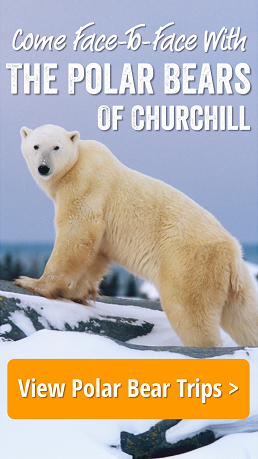by Steve Selden | May 14, 2015 | Videos
An exciting Animal Planet video about Halloween in Churchill, Manitoba. In 2013 a polar bear attack following Halloween night left two people injured and the town terrified from the attacks. Here’s the story!
by Steve Selden | May 13, 2015 | Conservation
Animals all over the Earth on land and within its oceans have evolved with some type of amazing camouflage or survival disguise in order to further exist in the wild. Many of these adaptations are intricate patterns or color shades that enable the living being to blend in with barely a trace of detection by predators.
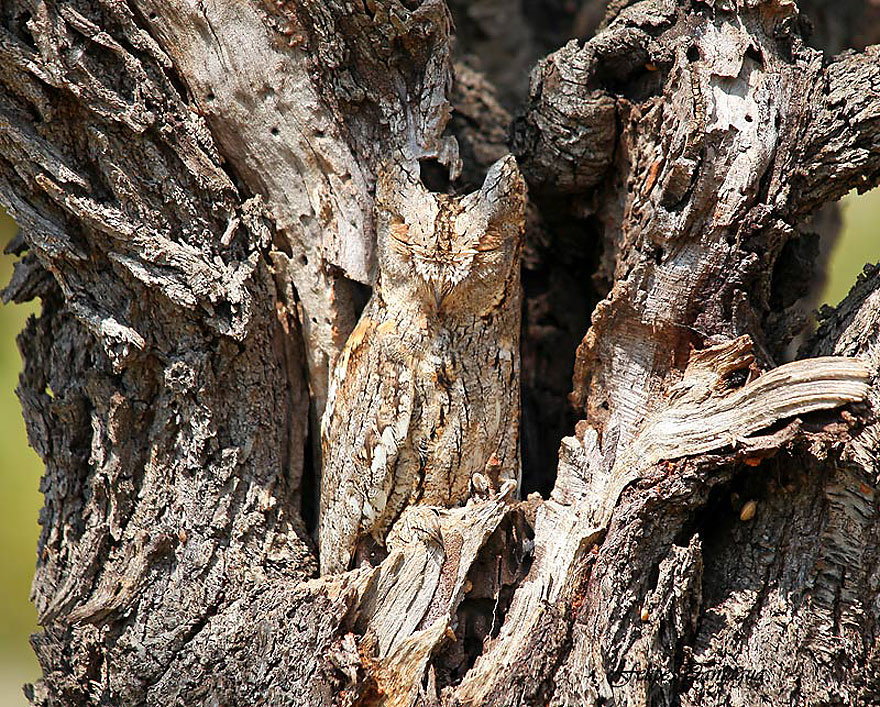
Owl blending perfectly in with a tree. Eoiarucasadvancedone.blogspot photo.
Camouflage in animals tends to adhere to three factors regarding environment. Blending in and becoming one with the environment is most common in nature. Behavior and physiology of the animal, relating to the behavior of the predator. And lastly, the environment in which the animal lives and hunts its food.
Since animal camouflage is genetically determined, each new generation adapts to it environmental features a little better. most animals mimic the habitat’s coloration and features and take on some representation in their appearance for disguise. Some species are able to change those features as needed through biological means. Chameleons obviously come to mind in this regard. Birds and some furred animals also adjust by shedding or molting and growing different colored coats seasonally.

Common baron caterpillar blending into a leaf. Wohinauswandern photo.
Animals also use camouflage in groups or herds. Zebras blend their individual stripes together and appear as a larger mass to dissuade would be predators like lions. Tropical fish utilize this tactic as well by forming huge schools as protection. See kids… another reason to stay in school.
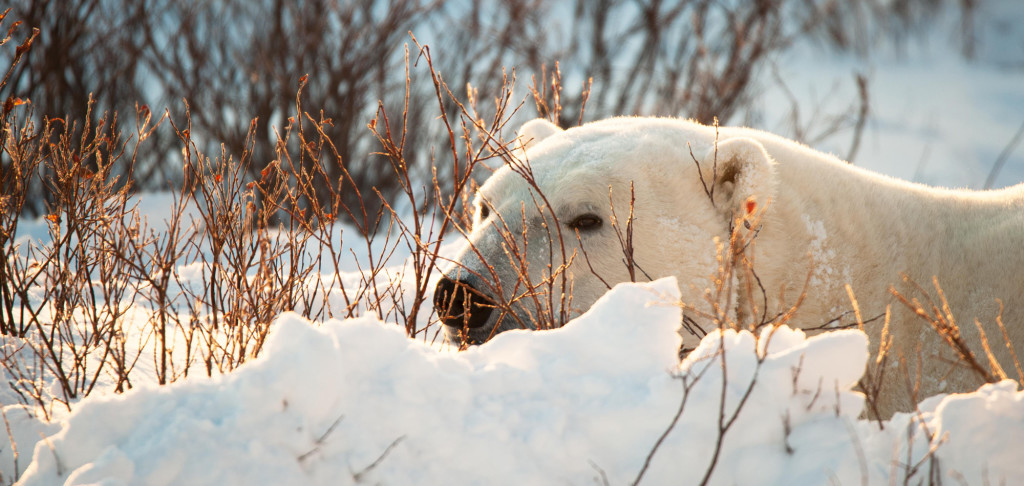
Polar bear using white to blend in. Natural Habitat Adventures photo.
Polar bears and Arctic animals use white as their camouflage. Polar bears are obviously a larger animal that has few predators besides humans. Therefore, blending in for them is a matter of disguising for predatory reasons. In essence, sneaking up on seals on white ice is the advantage gained. Other Arctic animals such as Arctic fox, Arctic hares, ptarmigan and beluga whales all need that white on white for protection from predators in the wild.
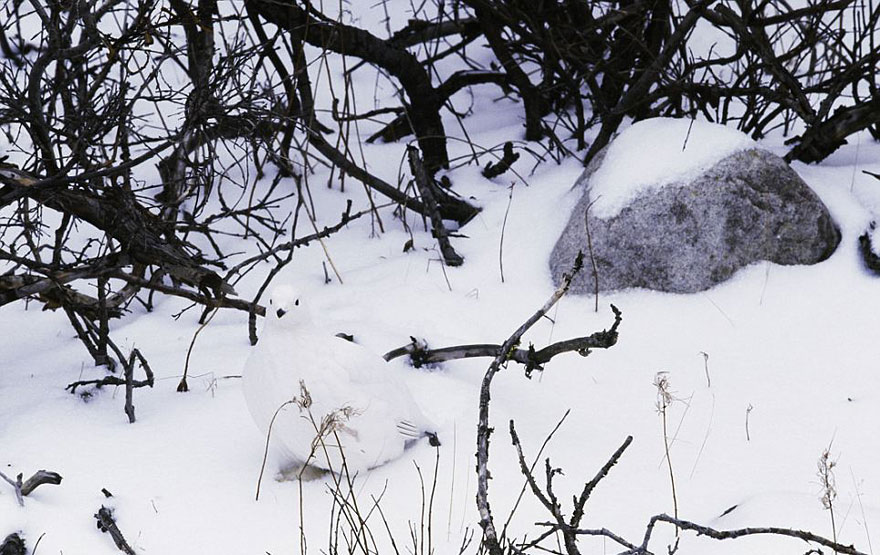
Willow ptarmigan becoming one with the snowy tundra. Art Wolfe photo.
by Steve Selden | May 12, 2015 | Churchill Photography
Here are some fantastic photos of polar bears from really talented photographers! Enjoy the Churchill images on this Tuesday. I’m amazed at how many new depictions of polar bears capture their incredible beauty from so many different vantage points. We would love to post some of your best wild polar bear photos. Post them on our Facebook page: Churchill Polar Bears.

Polar bear mom and cubs. Roie Galitz photo.

Polar bears sparring intently. Simon Gee photo.
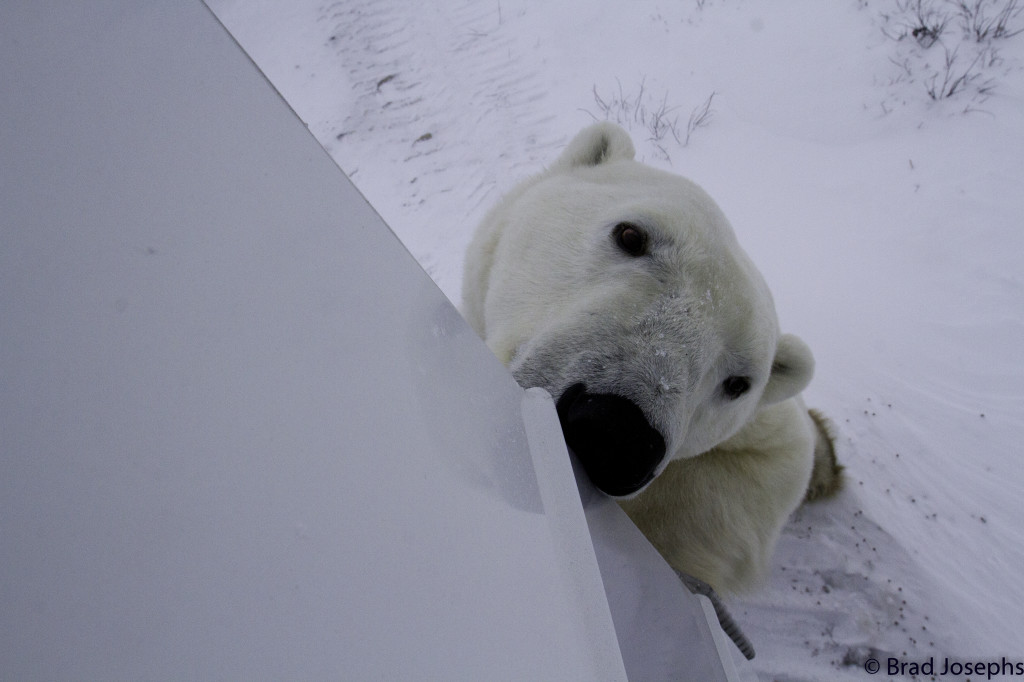
Polar bear sniffing its way around a polar rover. Brad Josephs photo.

Polar bear in the willows in Churchill. Eric rock photo.
Come photograph the majestic polar bears of Churchill this fall!
by Steve Selden | May 11, 2015 | Churchill News
Biologically stated lichens are two species living together as a single organism. This organism survives because of the symbiotic relationship between the alga and the fungus. These two species working together might just be the optimal combination of survival in the history of living organisms!

White crowned sparrow on Xanthoria elegans lichen encrusted rock. Stephanie Fernandez photo.
Here’s how the two species work together. The usually larger species-the fungus-utilizes the alga for food produced through photosynthesis. Tall filaments around the perimeter of these lichens act as protection for alga from environmental strains as well as work to trap nutrients and moisture thus increasing life span for the alga. This symbiosis is so successful that this lifespan can reach thousands of years. There are not a lot of moving parts to wear out in this simple organism. Lichens are used to measure geological time of various events in Earth’s history such as glacial retreat.
The beauty of lichens is in the vibrant colors that breathe life into the Arctic and northern regions. These colors stand out especially in winter when they poke through snow covered areas ..usually on rocks sloping off to the water or valleys. Also, when you examine these amazing, diverse organisms up-close with a magnifying glass or a spool lens the true wonder of the structures appear. Alien-like colonies provide a bedazzling look into the lichen world appearing as their own microscopic worlds.
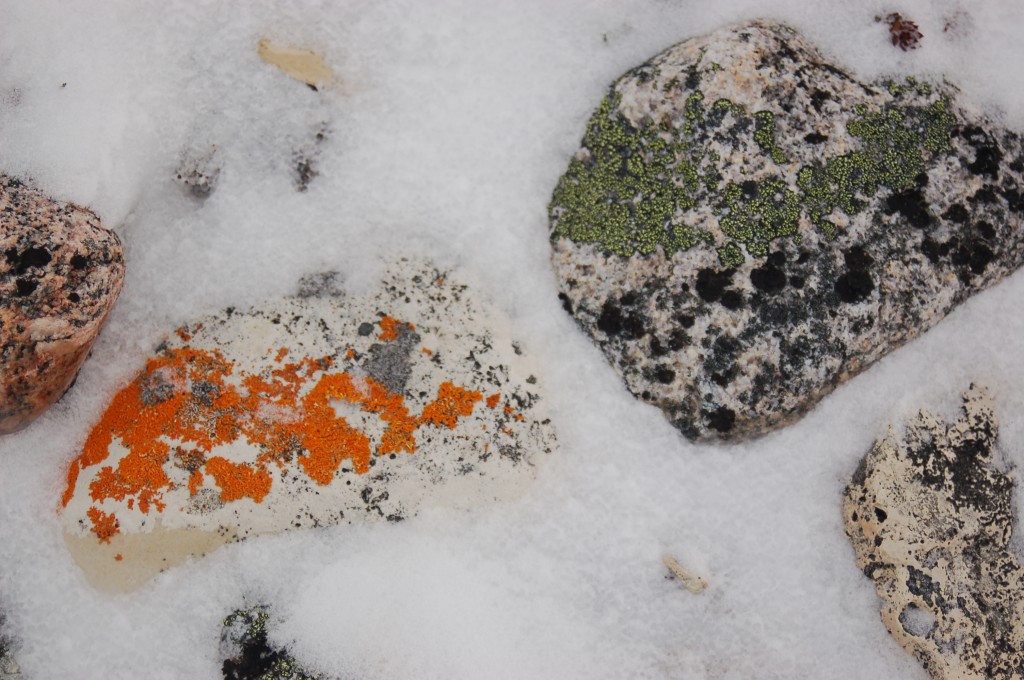
Lichens poking through the winter snow. Natural Habitat Adventures photo.
Lichens have the unique ability to shut down their metabolisms for periods of time to survive extreme conditions like cold, heat and drought. This ability to regulate and utilize varying amounts of air, light and moisture, lichens can colonize just about anywhere on Earth. One of Churchill, Manitoba’s most prolific lichen species, Xanthoria elegans, survived for over a year and a half attached to the exterior of the International Space Station orbiting the planet in an extreme cold and oxygen deficient climate. These experiments and survivability of the lichen species in space have giving credence to the idea of ‘panspermia’ or the theory of life spreading from of life spreading between planets and even solar systems.

Trays filled with organisms were installed on the outside of the International Space Station to study the affects of space on their life cycle. European Space Agency photo.
Living organisms surviving in open space supports the idea of ‘panspermia’ — life spreading from one planet to another, or even between solar systems.
The viability of lichens surviving in such harsh conditions and particularly the strong power of the Sun for an extended time of 18 months has sparked major interest in cosmetic companies trying to develop sunscreen products.
by Steve Selden | May 10, 2015 | Churchill Photography
On Mother’s Day these three photographs of mothers and cubs in Churchill are pretty fitting! Enjoy these wonderful polar bear shots and have an amazing Mother’s Day!
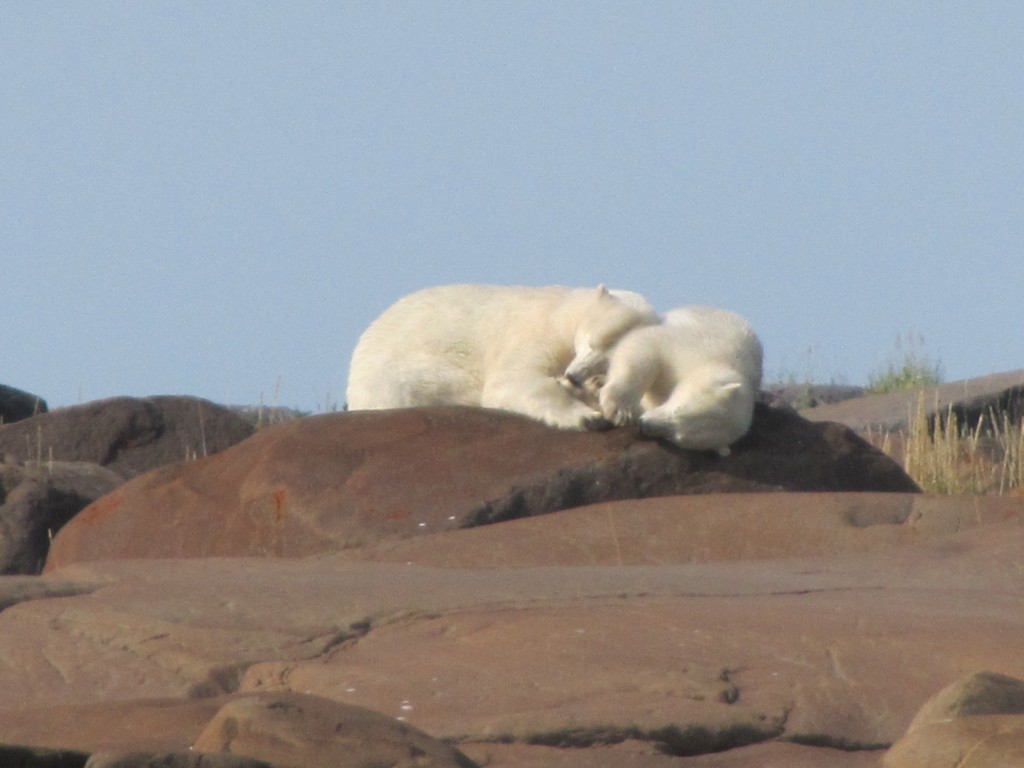
Polar bear sow and cub on the Precambrian shield. Natural Habitat Adventures photo.

Polar bear sow and cub out near Halfway Point. Stephanie Fernandez photo.
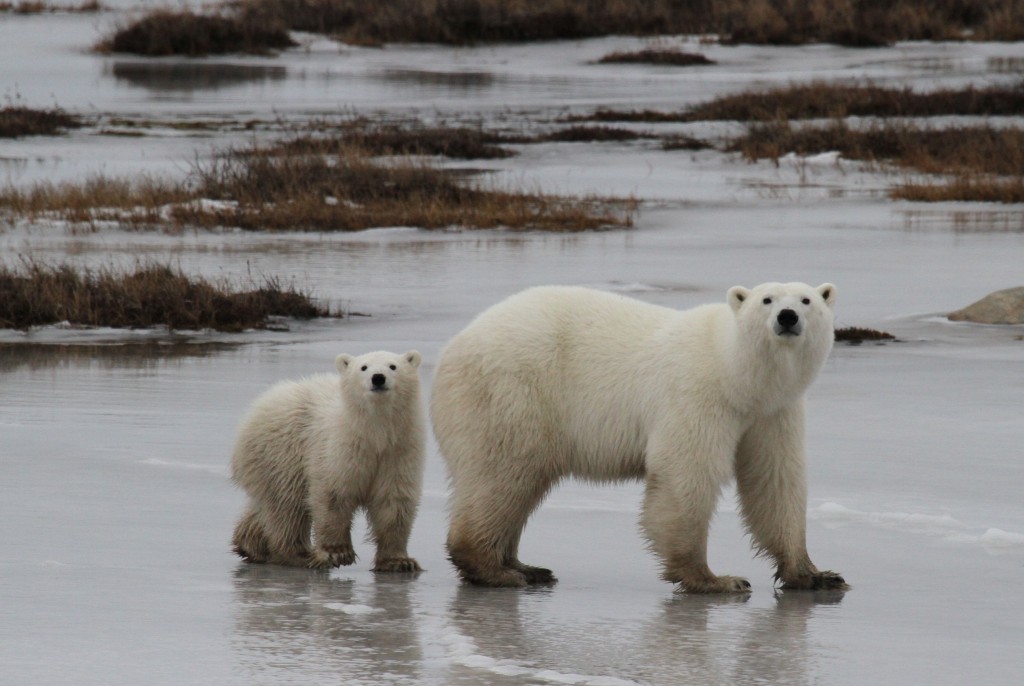
Mother and cub on the pond ice in Churchill. Natural Habitat Adventures photo.















